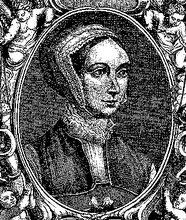I have read many histories and commentaries on the Reformation, many of which are loaded with partisan rhetoric, some of which I enjoy using myself. But the historical perspective on the Reformation which I regard as second only to that given by the Martyrs themselves (which should be evident from this blog), is that of Christopher Dawson.
In his book "Progress and Religion" he speaks very pithily about the Reformation in about four pages (pp140 - 144) from the perspective of sociology. What he says speaks volumes, I think, about the history and culture of England since the early 1500s, by speaking about it in with reference to the Renaissance.
His point is essentially that the Renaissance was a movement in Europe which sought to move away from the Medieval world and to return to an older form of culture. In southern Europe this culture was obviously Classical culture, a culture which was now linked to the Catholic Faith, a Faith to which southern Europe maintained its embrace. In Northern Europe however, what had preceded Christianity was pagan culture, and so what took place there was not simply a rejection of Medievalism but of the Catholic Faith as well. In other words, rather than re-embrace its pagan background again (which, incidentally, it is doing now), the focus of the Renaissance in Northern Europe was to re-mould Christianity.
Such a perspective helps us to appreciate the force with which the Catholic Faith and Church was rejected in the North, and how that rejection is still so firmly in place. As Dawson says, "The Renaissance of Northern Europe is the Reformation." (p141)
No where more than in England did this rejection take place in such a powerful way, incorporating all the energies of the State to scour out, in a detailed way, the very substance of Christianity from the fabric of English life, and to impose in its place an idealistic form of Christianity.
So, when we look at such topics as the Royal Succession or Ecumenism itself, Dawson helps us to see beyond merely Theological or cultural arguments, to something which lies very deep in the psyche and personality of a people who have gone through a profound and complex revolt. Making England Catholic again must involve a deep respect for what has transpired here; many of the prejudices and now subconscious attitudes to whatever is Catholic, can only be undone by grace.
Dawson's book, "Religion and Progress", is a book which you should all have and imbibe, especially its second Part.























